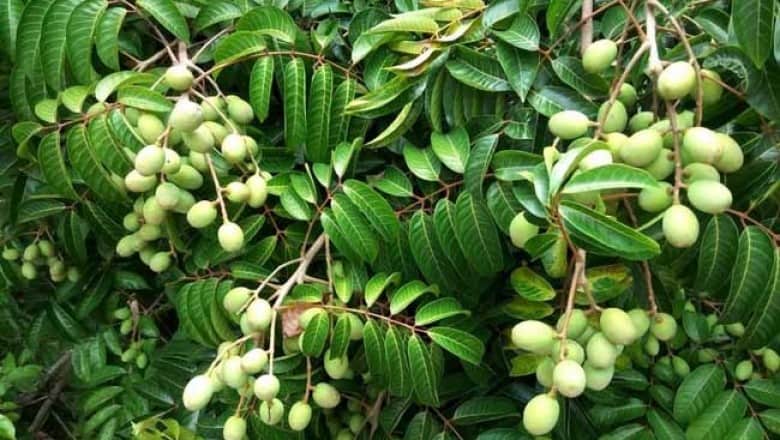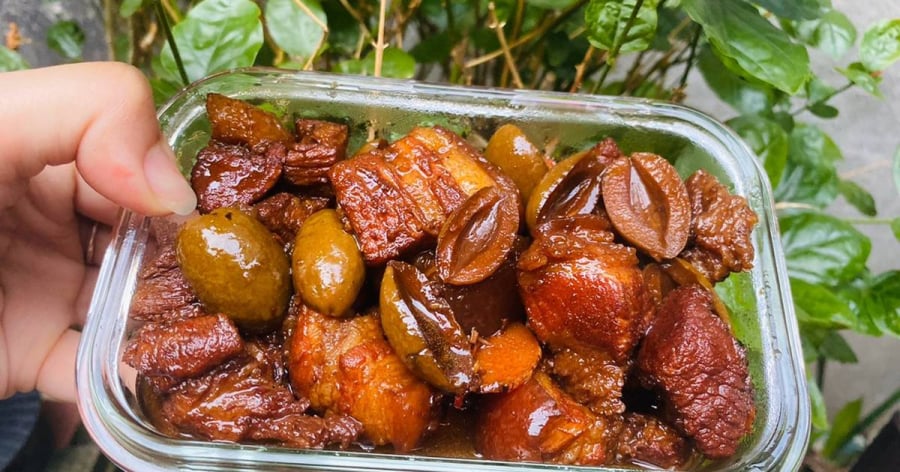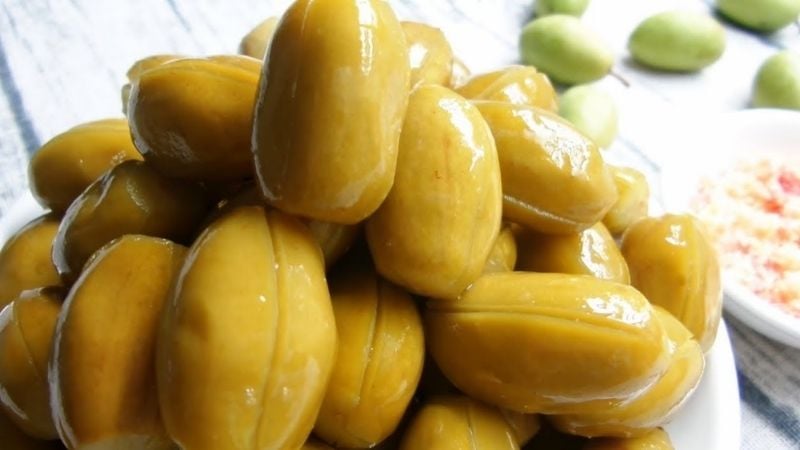White apricot is a type of fruit from the mountainous region, midland. This traditional fruit used to be unpopular, even left to fall abundantly. But in recent years, white apricot has become a specialty, and city dwellers have to buy it to prevent it from disappearing.
White apricot has a green color, can be pickled, made into jam, used to stew meat, fish,…all are delicious. This type of fruit has a slightly bitter taste, so when stewed, it will absorb the spices, absorb the sweet and fatty taste of the meat and fish, making it more fragrant, slightly sour, and extremely interesting.

You can refer to the delicious dishes made from white apricot below.
Braised meat with white apricot
Ingredients
– Pork belly or shoulder: 300g
– White apricots: 300-400g
– Soy sauce, fish sauce, soup powder, water.

Instructions
– Rinse the white apricots and use a heavy knife or pestle to crush the apricots. You can also use a knife to cut the apricots into pieces, but crushing will release more juice, which will soak into the meat and make the dish more delicious.
– Rinse the meat, cut it into thick pieces for stewing.
– Put the meat into the pot along with the apricots.
– Add 2 spoons of soy sauce, fish sauce, soup powder to taste, 1 bowl of water for rice, stir well.
– Put the pot of meat on the stove, bring to a boil over high heat, then reduce the heat and simmer for about 30-35 minutes until the meat and apricots are tender. At this point, the meat will have a beautiful red color, flavored with apricot, and the apricot will be soft, slightly sour, and extremely delicious.
How to pickle green apricots
Ingredients
– Green apricots: 500g
– Crystal sugar: 500g
– Salt: 500g
– Fish sauce: 300ml
– Chili
– Garlic
To choose delicious green apricots, you should choose ripe ones, when squeezed by hand, the flesh of the fruit should not be soft. Green apricots with green color will have firm fruit flesh, while overripe apricots will not taste good.

Instructions
– After rinsing the green apricots, cut them in half and remove all the seeds. Then soak the apricots in 2 liters of water mixed with 250g of salt overnight.
If you don’t have much time, you can soak the apricots in warm water for more than 1 hour. Soaking the apricots with diluted saltwater overnight helps remove toxins, resin, and the bitter taste of the apricots. After soaking in saltwater, rinse the apricots with water 5-6 times. Doing so will help reduce the sour taste of the apricots.
– Peel and slice the garlic. Rinse the chili pepper and let it dry.
– Boil a pot of water, then add the apricots to boil. You should pay attention to the cooking time of the apricots. If boiled for too long, the apricots will be mushy, and if boiled too quickly, the apricots will be bitter. The time to boil the apricots from the moment you put them in the pot until the water boils again is about 3 minutes. Then turn off the heat, scoop out the apricots, and rinse them clean, so the apricots will be less sour and bitter.
– Next, you need to cook the pickling brine. Bring a pan and add about 500g of sugar and 500ml of water, wait until the sugar is dissolved, then add 3 cups of good fish sauce. Then wait for the water to boil, turn off the heat, and let it cool.
– Put the drained apricots into a glass jar. For each layer of apricots, add a little garlic and chili. Then pour the pickling brine into the jar. You should press it down with a clean cutting board or put a bag of water on the surface to make sure the apricots are completely soaked in the pickling brine.

































